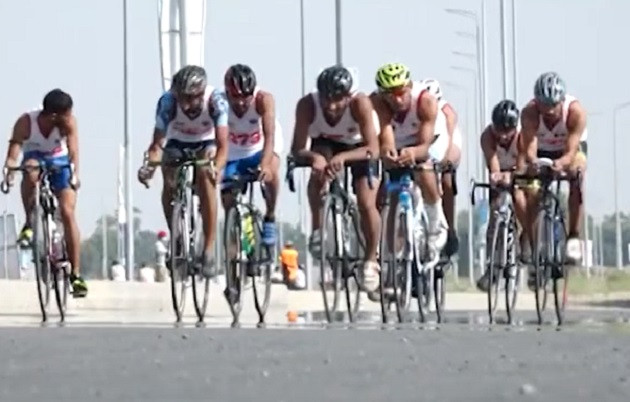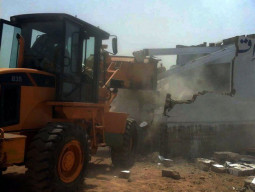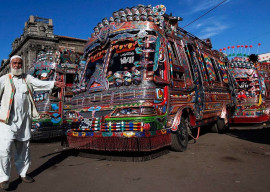
The recent surge in petroleum prices, ballooning of taxes in the automotive sector and the record depletion of air quality, should ideally make non-carbon-emitting transport options like bicycles the vehicle of choice for a great majority of port-city residents.
It seems like the perfect option for a metropolis like Karachi, which struggles with a decent mass transit system and is home to more than seven million young people between the ages of 15 and 29 years of age. A lot many of whom cannot afford to independently own or sustain a motor vehicle, but need to constantly navigate the sprawling megacity for work or education.
Yet however, unlike most urban metropolises around the world, bicycling still remains a rather unpopular mode of transport for the residents of Karachi. To them, at its very best, cycling is a fitness activity or a hobby for the weekends. “Every so often, one could spot a heard of cyclists actively paddling along the city’s grubby shoreline at wee hours of the morning; a pickup truck or two in tow and a dozen guards on either sides,” says Sameena, who lives close to the upscale Clifton beach area. “This is not a safe city for cyclists, especially if they are women. So the guards and pickup trucks make sense. The group paddles a few miles, feels the wind on their face, and then the bikes are loaded back on their pickup trucks and they drive home…it’s a rich people thing,” she added.
According to Adeel Islam, a bicycle dealer in the Lighthouse market, there has been a slight increase in bicycle sales owing to the surge in petroleum prices and rising public transport fares. As it gets more difficult to afford fuel and fare for the lower socio-economic classes, Islam believes that some motorcyclists and bus-riders are now adopting bicycling as a mode of transport. “The trend of choosing bicycles as a regular mode of commute rather than a short-term fitness activity, is more commonly seen among the city’s daily-wage earners who don’t live too far from their places of work and can no longer justify travel fares; like hotel workers, janitors and people who work as housekeepers and mosque staffers,” the dealer added.
Read More: Ban lifted on inter-provincial public transport
Haji Baba, an elderly man who works at a local mosque, said that he had to pull out his old bicycle when he could no longer afford the bus fares. “It helps me keep fit and is a much cheaper alternative to motorcycles and buses, but the only problem is that the roads here are very bad. Tires get punctured every other day and getting it fixed costs Rs40 per puncture,” said Baba.
According to Islam however, currently there are three categories of bicycles available in the market. These include Pakistan-made bicycles, the Chinese ones and the more expensive BMX options imported from the west. “The most commonly sold are the Pakistani variety and the slightly pricier Chinese bikes. Middle and low income groups who intend to use bicycles for transportation prefer to buy Pakistani brands, that range from Rs14,000 to Rs20,000. While the more expensive Chinese options are preferred by the upper-class hobbyists, as they also offer a range of options for women and girls, “ he told.
Shahbano, a college student who took up cycling during the Coronavirus lockdowns to remain fit, said that although she would like to cycle to her university and turn her hobby into a lifestyle, “the streets here are just not designed for it. Where are the bike-lanes? What even are the laws for cyclist protection? Even if I cycle in my neighbourhood, I constantly have to remain alert for approaching traffic, since no one is used to of seeing cyclists on the streets here,” the student told The Express Tribune, urging for more cyclist-friendly traffic laws.
Published in The Express Tribune, November 24th, 2021.


1732274008-0/Ariana-Grande-and-Kristin-Chenoweth-(1)1732274008-0-165x106.webp)


















COMMENTS
Comments are moderated and generally will be posted if they are on-topic and not abusive.
For more information, please see our Comments FAQ